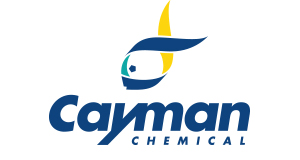MRE11 (human, recombinant; aa 1-411)
MRE11 (human, recombinant; aa 1-411)
SKU
CAY40752-10
Packaging Unit
10 µg
Manufacturer
Cayman Chemical
Availability:
loading...
Price is loading...
Formulation: 50 mM Tris-HCl, pH 7.5, 200 mM sodium chloride, 20% glycerol
Purity: ≥90% estimated by SDS-PAGE
Formula Weight: 0
Shelf life (days): 365
Notes: Meiotic recombination 11 homolog (MRE11) is an endo- and exonuclease and member of the MRE11-RAD50-NBS1 (MRN) complex, which is involved in DNA double-strand break repair.{61915} It exists as a homodimer and is composed of an N-terminal nuclease domain with five phosphodiesterase motifs, two dimerization motifs, and a Nijmegen breakage syndrome protein 1 (NBS1) interaction domain, a capping domain, and a C-terminal domain that contains two DNA-binding domains on either side of the RAD50 interaction domain.{66894} Alternative splicing of MRE11 produces two main isoforms, MRE11 isoform 1, which is the full-length isoform, and MRE11 isoform 2, which lacks exon 16.{66895} MRE11 is expressed in proliferative tissues such as testis and spleen and localizes to the nucleus following DNA damage.{66896,66897} It is involved in homologous recombination (HR) and non-homologous end joining (NHEJ) and forms complexes with two dsDNA ends (synaptic complex) or a single ssDNA or dsDNA end (branched complex).{66894} Knockdown of MRE11 sensitizes cells to radiation in vitro, an effect that can be rescued by expression of MRE11 isoform 1 or 2.{66895} Overexpression of MRE11 increases tumor volume in a breast cancer mouse xenograft model.{66898} Mutations in MRE11 are associated with ataxia-telangiectasia-like disorder (ATLD) and cancer.{66897,66899} Cayman’s MRE11 (human, recombinant; aa 1-411) protein has a calculated molecular weight of 74.7 kDa.
Purity: ≥90% estimated by SDS-PAGE
Formula Weight: 0
Shelf life (days): 365
Notes: Meiotic recombination 11 homolog (MRE11) is an endo- and exonuclease and member of the MRE11-RAD50-NBS1 (MRN) complex, which is involved in DNA double-strand break repair.{61915} It exists as a homodimer and is composed of an N-terminal nuclease domain with five phosphodiesterase motifs, two dimerization motifs, and a Nijmegen breakage syndrome protein 1 (NBS1) interaction domain, a capping domain, and a C-terminal domain that contains two DNA-binding domains on either side of the RAD50 interaction domain.{66894} Alternative splicing of MRE11 produces two main isoforms, MRE11 isoform 1, which is the full-length isoform, and MRE11 isoform 2, which lacks exon 16.{66895} MRE11 is expressed in proliferative tissues such as testis and spleen and localizes to the nucleus following DNA damage.{66896,66897} It is involved in homologous recombination (HR) and non-homologous end joining (NHEJ) and forms complexes with two dsDNA ends (synaptic complex) or a single ssDNA or dsDNA end (branched complex).{66894} Knockdown of MRE11 sensitizes cells to radiation in vitro, an effect that can be rescued by expression of MRE11 isoform 1 or 2.{66895} Overexpression of MRE11 increases tumor volume in a breast cancer mouse xenograft model.{66898} Mutations in MRE11 are associated with ataxia-telangiectasia-like disorder (ATLD) and cancer.{66897,66899} Cayman’s MRE11 (human, recombinant; aa 1-411) protein has a calculated molecular weight of 74.7 kDa.
| SKU | CAY40752-10 |
|---|---|
| Manufacturer | Cayman Chemical |
| Manufacturer SKU | 40752-10 |
| Package Unit | 10 µg |
| Quantity Unit | STK |
| Clonality | Recombinant |
| Product information (PDF) | Download |
| MSDS (PDF) |
|

 Deutsch
Deutsch








